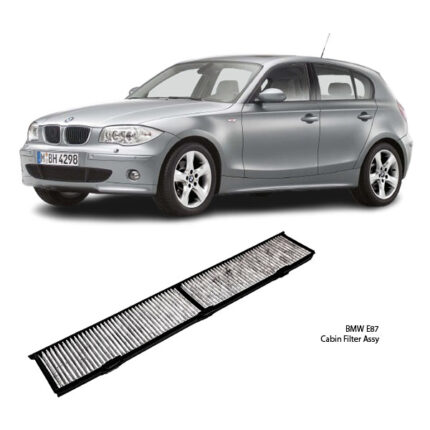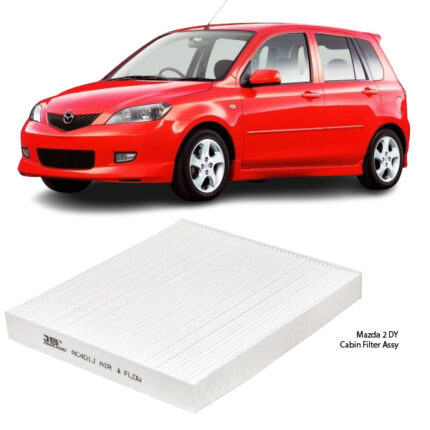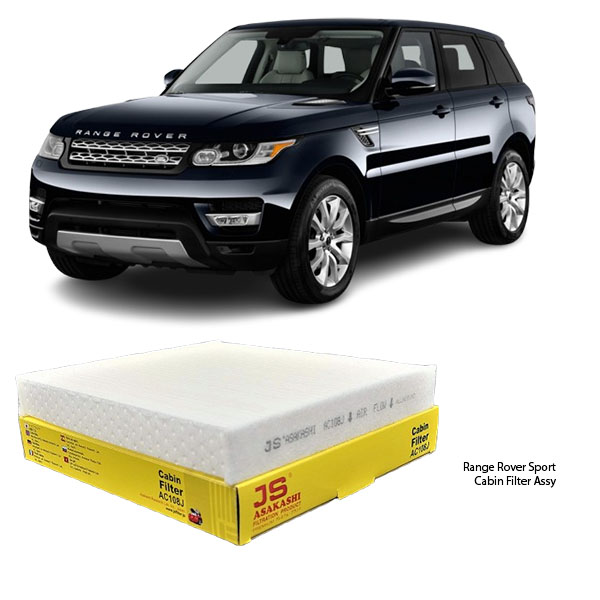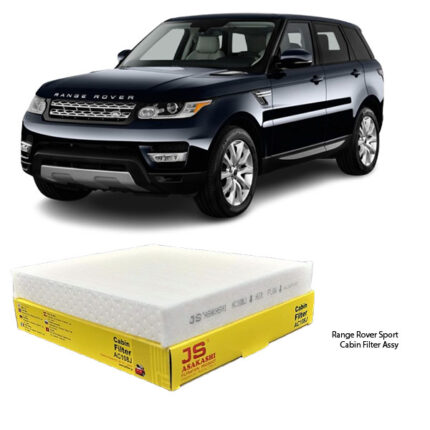Get Range Rover Sport Cabin Filter Assy AC108J in Kenya
A Cabin Filter Assembly is an essential part of a vehicle’s climate control system, designed to maintain the quality of the air entering the passenger cabin. As vehicles operate in diverse environments—ranging from urban areas with high pollution levels to dusty rural roads—the air drawn from outside into the vehicle can contain numerous contaminants. The cabin filter assembly plays a crucial role in trapping these unwanted particles, ensuring that occupants breathe clean, filtered air.
Typically located within the ventilation system, the cabin filter assembly functions as the first line of defense against pollutants such as dust, pollen, soot, mold spores, and in advanced designs, even harmful gases and odors. Over time, as the filter captures these contaminants, it becomes saturated and less effective. Regular inspection and timely replacement of this component are important not just for health and comfort, but also for preserving the performance and longevity of the HVAC system.
What is a Cabin Filter Assembly?
A cabin filter assembly is a unit that houses a filter medium responsible for cleaning incoming air before it is distributed into the vehicle’s interior. It is built to fit securely within the air intake channel of the HVAC system and is composed of a filter element, a supporting frame or housing, and seals that prevent unfiltered air from bypassing the system.
The filter element is often made from pleated paper, non-woven synthetic fibers, or a composite of multiple materials. Depending on the design and filtration goals, it may include layers specifically engineered to capture fine particles or neutralize odors using activated carbon. Higher-end versions can even target microscopic pollutants, enhancing protection against airborne allergens and chemical vapors.
Components of a Cabin Filter Assembly
The cabin filter assembly typically includes the following main components:
-
Filter Media: This is the core of the assembly and the component that performs the actual filtration. Filter media can be a single-layer design or multi-layered for improved performance. Common materials include:
-
Non-woven synthetic fiber: Durable and resistant to moisture.
-
Pleated paper: Effective for particulate filtration.
-
Activated carbon layer: Absorbs gases and odors.
-
-
Filter Housing or Frame: This holds the filter media in place and ensures proper alignment within the HVAC system. It must be rigid enough to resist deformation from airflow pressure and vehicle vibrations.
-
Seals or Gaskets: These prevent air from leaking around the edges of the filter. A proper seal ensures all air passes through the filter media before entering the cabin.
-
Retention Clips or Latches (if applicable): Depending on the design, these may be used to secure the filter in position and make replacement easier.
Signs of a Worn-Out Cabin Filter
A worn-out or clogged cabin filter can compromise both comfort and health. The following are common signs that a cabin filter needs to be replaced:
-
Reduced Airflow from Vents: As the filter accumulates dust and debris, it becomes clogged and restricts airflow into the cabin. This results in weak air circulation from the vents even when the fan is set to high.
-
Persistent or Unpleasant Odors: A dirty filter can harbor mold, mildew, or bacteria, leading to musty smells inside the cabin. This is particularly noticeable when the air conditioning is first turned on.
-
Foggy Windows: A clogged filter can reduce the efficiency of the defrosting system, leading to slower clearing of fog or condensation on the interior glass surfaces.
-
Increased Dust Inside the Cabin: If you notice more dust than usual settling on the dashboard or seats, it may be a sign that the filter is no longer capturing airborne particles effectively.
-
Unusual Noises from the HVAC System: Whistling or buzzing sounds from the vents can indicate that air is struggling to pass through a blocked filter.
-
Allergy Symptoms: Sneezing, coughing, or eye irritation during a drive may point to increased allergens in the cabin air due to an ineffective filter.
Advantages of a Good Cabin Filter
Replacing the cabin filter regularly and using a high-quality assembly offers several benefits, including:
-
Improved Cabin Air Quality: A clean filter removes dust, pollen, and other airborne contaminants, creating a healthier environment for occupants, especially those with allergies or respiratory sensitivities.
-
Odor Control: Filters with activated carbon layers help neutralize external odors from traffic, industrial areas, or nearby fires, keeping the cabin environment fresh.
-
Efficient HVAC System Performance: Unrestricted airflow through a clean filter allows the heating and air conditioning system to operate efficiently, ensuring faster temperature adjustments and even air distribution.
-
Prevention of HVAC System Damage: Debris that bypasses a filter can accumulate in the blower motor or evaporator, leading to performance issues or costly repairs. A good filter assembly helps prevent this.
-
Enhanced Driving Comfort: With clean, fresh air flowing into the cabin, passengers can enjoy a more pleasant ride, particularly on long trips or in high-traffic areas.
Disadvantages of a Worn-Out Cabin Filter
Failing to replace a worn-out cabin filter can lead to several disadvantages:
-
Poor Air Circulation: A clogged filter significantly limits the amount of air entering the cabin, making it difficult to heat or cool the interior efficiently.
-
Unpleasant Smells: Bacteria, mold, and trapped pollutants can accumulate in a dirty filter, causing persistent bad odors that are hard to remove without replacing the filter.
-
Increased Wear on HVAC Components: When airflow is restricted, the blower motor has to work harder, potentially leading to premature failure and higher maintenance costs.
-
Unhealthy Cabin Environment: A neglected filter may allow allergens, dust, and even pollutants to pass into the cabin, affecting the health and comfort of passengers.
-
Greater Condensation Issues: Poor airflow and increased humidity levels due to a clogged filter can lead to fogged-up windows, reducing visibility and safety.
Follow us on Facebook for more parts.





Reviews
Clear filtersThere are no reviews yet.